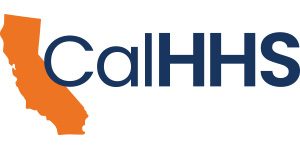CHHS is increasing access to public health, health care, human services and other data, driving improved transparency and data-driven innovation that enhance government services across the health and human services landscape.
Since the launch of the portal in November 2014, the innovation has already begun to bear fruit. Though CHHS Open Data has finished only the first leg of a multi-stage journey, following are five successes of note so far.
1. CHHS has finished onboarding all 12 departments to the CHHS Open Data Portal, establishing open data programs and capabilities across the Agency. Following a standard set of principles and procedures laid out in the CHHS Open Data Handbook, departments are continually publishing new datasets that will expand the variety and volume of data available on the portal, as well as expand transparency and encourage thinking about data in new and innovative ways.

The administration, training, support, and governance of the portal has been a shared effort amongst CHHS departments. This model of a CHHS “community of support” has engaged staff, while making the most efficient use of limited state resources. Additionally, the CHHS open data initiative has laid the groundwork for important organizational improvements to enhance the performance of CHHS programs.
2. Responding to the December 2014 Southern California measles outbreak, the New York Times and the Los Angeles Times produced powerful and compelling maps that display California school vaccination rates. These data, available on the CHHS Open Data Portal, enrich news reporting and help inform the public through the same single source of state health data.
The Los Angeles Times http://spreadsheets.latimes.com/immunization-levels-california/
3. CHHS partnered closely with Code for Sacramento to develop WICit, a web application that helps recipients of the Women, Infant, and Children (WIC) program better find service locations and information about how to apply for the program. The app uses a modern, user-centric web experience to make it easy and intuitive. The app’s source code is maintained on Code for Sacramento’s GitHub repository, where others can contribute to the software by expanding the functionality, identifying issues, or requesting new features.
4. As part of an effort focused on connecting local California communities with state health data, the California Health Care Foundation and CHHS partnered to launch the California Health Data Project. The initiative created a pilot program of health data ambassadors centered in Los Angeles, Fresno, and Sacramento—convening these communities to explore ways to leverage the portal and address local health challenges. Since the project launched in early 2015, the ambassador program has expanded to two more California cities: San Jose and San Diego.
Working with state data stewards and a Sacramento software development team, the project facilitated the creation of an interactive, web-based asthma visualization application to inform and educate the public. The app pipes data from the portal and was developed using iterative, agile methodologies, producing a product that can be of vital use to policy makers, public health officials, and community clinicians by showing the effects, disparities, and treatments related to asthma.
5. Finally, to raise awareness of the data available on the portal, energize the developer community, showcase innovations made possible by the portal, and demonstrate the power of open health data, CHHS and the California HealthCare Foundation hosted a series of Health Data Code-a-Thons in June, 2015—taking place in Los Angeles, Fresno, and Sacramento.
In Sacramento alone, 15 innovative prototype applications utilizing the CHHS Open Data Portal were produced in just a single weekend. Among them, an elegant tool to parse the metadata of the portal itself, an Android app that was available on the Google Play Store by the end of the event, and several interactive dashboards and scorecards sourcing data automatically from the portal.




